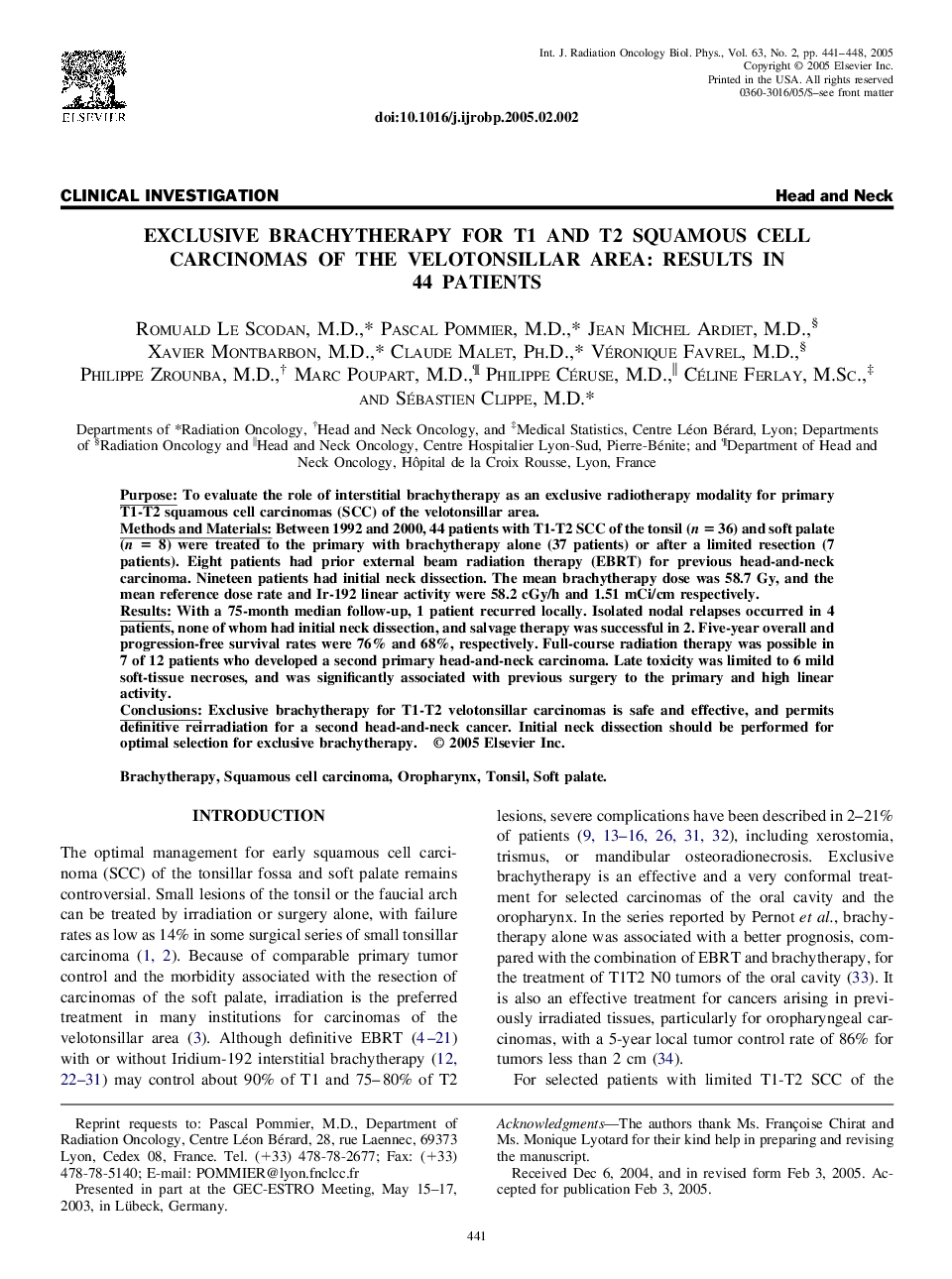| Article ID | Journal | Published Year | Pages | File Type |
|---|---|---|---|---|
| 9872112 | International Journal of Radiation Oncology*Biology*Physics | 2005 | 8 Pages |
Abstract
Purpose: To evaluate the role of interstitial brachytherapy as an exclusive radiotherapy modality for primary T1-T2 squamous cell carcinomas (SCC) of the velotonsillar area. Methods and Materials: Between 1992 and 2000, 44 patients with T1-T2 SCC of the tonsil (n = 36) and soft palate (n = 8) were treated to the primary with brachytherapy alone (37 patients) or after a limited resection (7 patients). Eight patients had prior external beam radiation therapy (EBRT) for previous head-and-neck carcinoma. Nineteen patients had initial neck dissection. The mean brachytherapy dose was 58.7 Gy, and the mean reference dose rate and Ir-192 linear activity were 58.2 cGy/h and 1.51 mCi/cm respectively. Results: With a 75-month median follow-up, 1 patient recurred locally. Isolated nodal relapses occurred in 4 patients, none of whom had initial neck dissection, and salvage therapy was successful in 2. Five-year overall and progression-free survival rates were 76% and 68%, respectively. Full-course radiation therapy was possible in 7 of 12 patients who developed a second primary head-and-neck carcinoma. Late toxicity was limited to 6 mild soft-tissue necroses, and was significantly associated with previous surgery to the primary and high linear activity. Conclusions: Exclusive brachytherapy for T1-T2 velotonsillar carcinomas is safe and effective, and permits definitive reirradiation for a second head-and-neck cancer. Initial neck dissection should be performed for optimal selection for exclusive brachytherapy.
Related Topics
Physical Sciences and Engineering
Physics and Astronomy
Radiation
Authors
Romuald M.D., Pascal M.D., Jean Michel M.D., Xavier M.D., Claude Ph.D., Véronique M.D., Philippe M.D., Marc M.D., Philippe M.D., Céline M.Sc., Sébastien M.D.,
